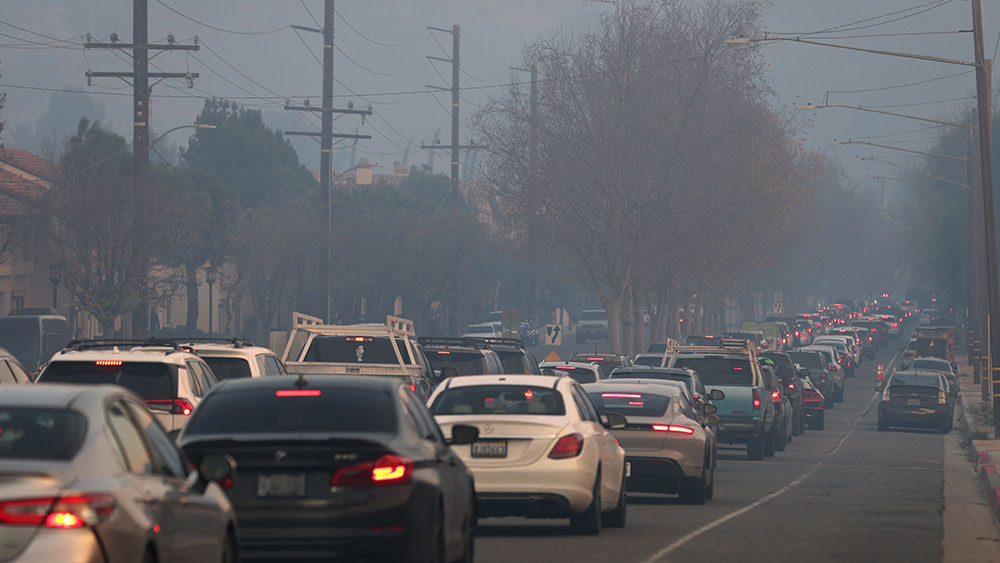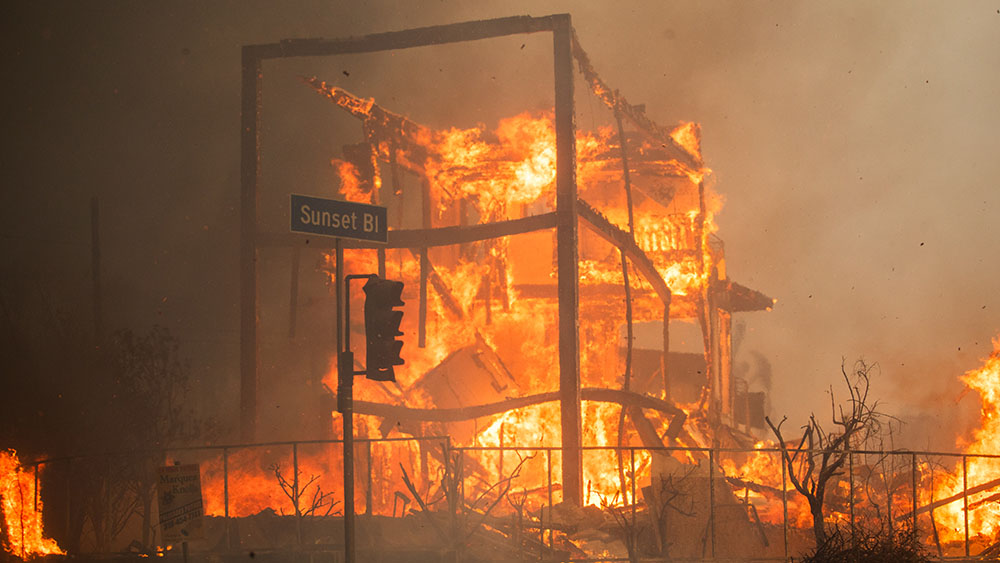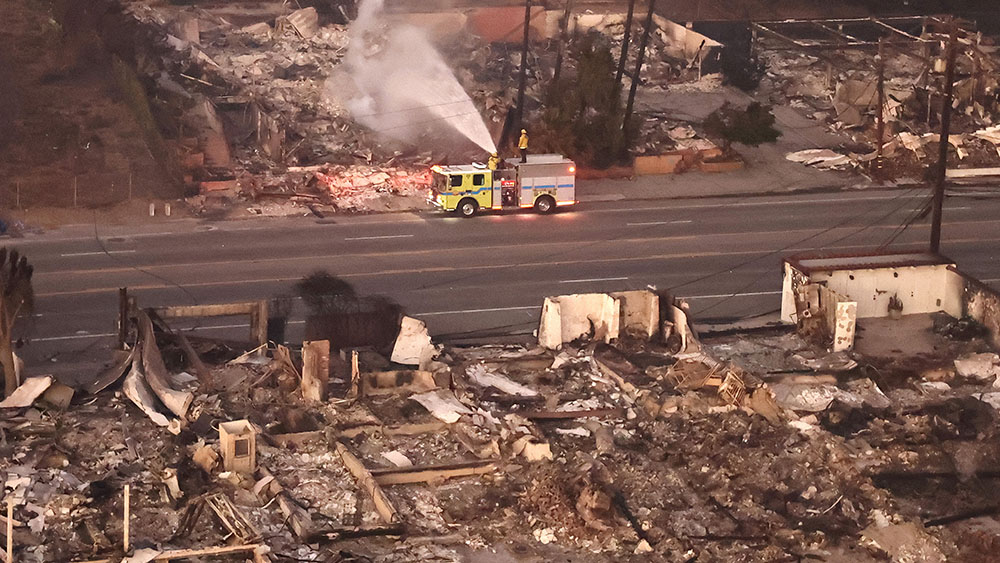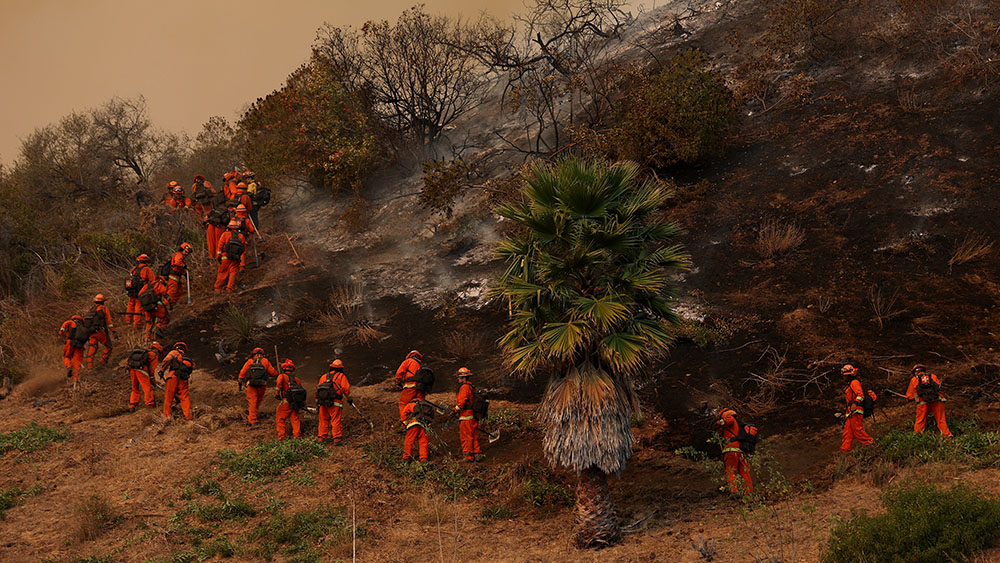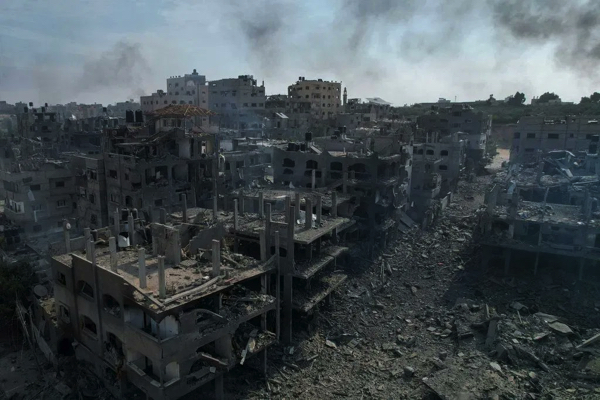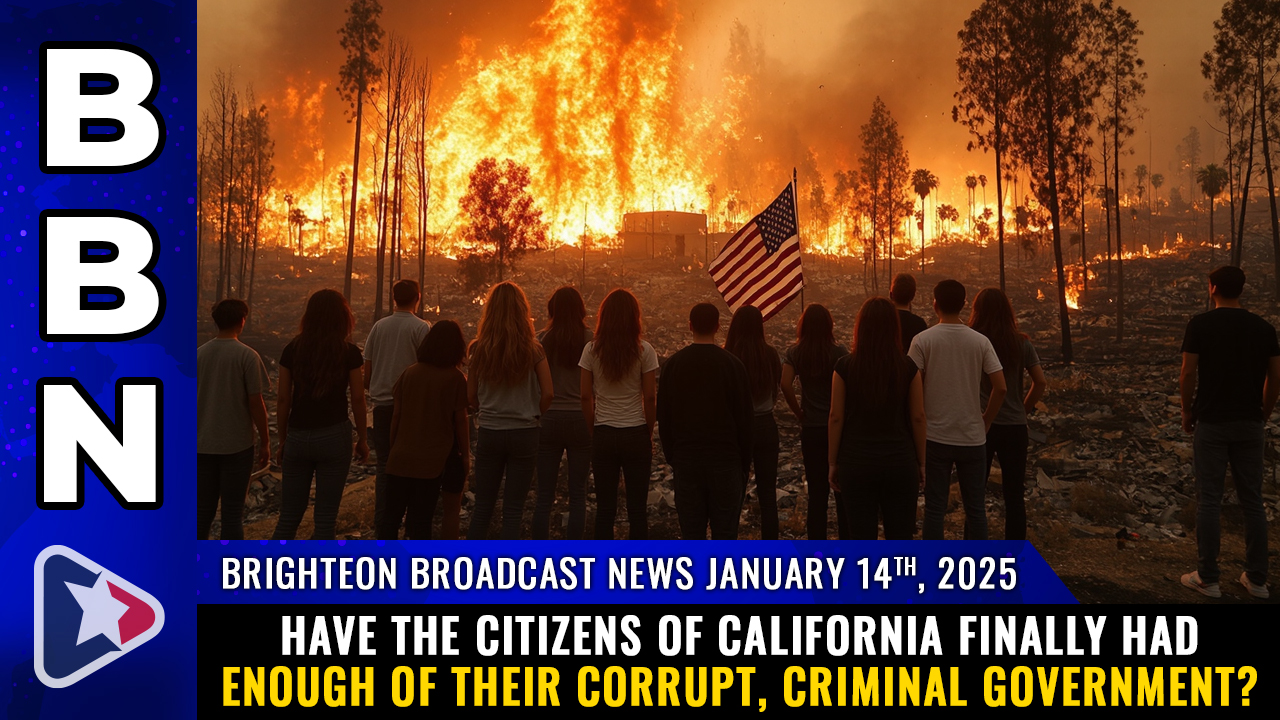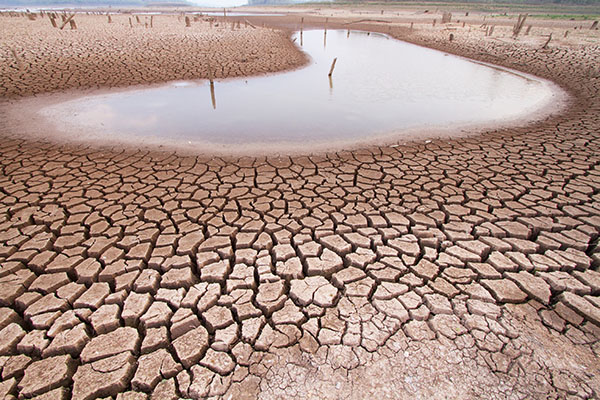L.A. wildfires cause $250 billion in damages, becoming one of costliest disasters in U.S. history
01/15/2025 / By Cassie B.
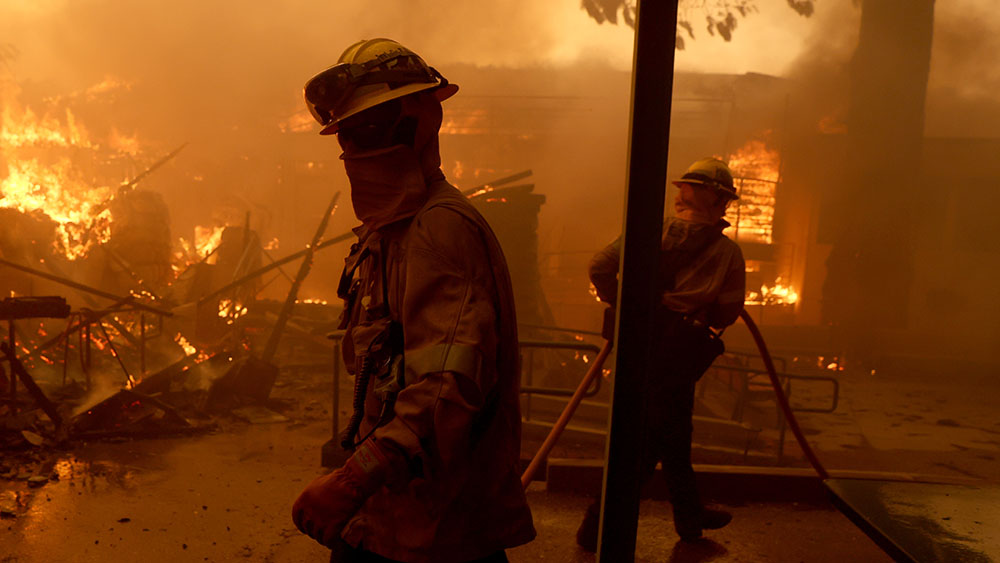
- The Los Angeles wildfires have caused an estimated $250 to $275 billion in damages, making them one of the costliest disasters in modern U.S. history.
- Over 40,000 acres burned, 24 deaths, and 12,300+ structures destroyed, with affluent areas like Santa Monica and Malibu heavily impacted.
- Hurricane-force winds fueled the fires, displacing tens of thousands and threatening long-term economic and emotional recovery.
- Recovery costs will fall on governments, insurers, and residents, with FEMA providing immediate aid but not full rebuilding coverage.
The wildfires tearing through Los Angeles have become one of the most devastating natural disasters in modern U.S. history, with AccuWeather estimating damages and economic losses between $250 and $275 billion. The fires, fueled by hurricane-force winds, have destroyed thousands of homes, displaced tens of thousands of residents, and left 24 people dead as of January 14. The flames, still burning across Southern California, are concentrated in affluent areas like Santa Monica and Malibu, where median home values exceed $2 million. With dangerous weather conditions expected to persist, the full extent of the damage remains unknown, but experts warn the economic and emotional toll will be felt for years to come.
AccuWeather’s estimate of $250 billion in damages and economic losses surpasses the total costs of the entire 2020 wildfire season and even exceeds the $225 billion to $250 billion in damages caused by Hurricane Helene in 2024. The figure includes both direct and indirect costs, such as the destruction of over 12,300 structures, emergency shelter expenses, healthcare costs for injuries and smoke exposure, lost wages, and the long-term economic impact on businesses and tourism.
“These fast-moving, wind-driven infernos have created one of the costliest wildfire disasters in modern U.S. history,” said AccuWeather Chief Meteorologist Jonathan Porter. “Hurricane-force winds sent flames ripping through neighborhoods filled with multi-million-dollar homes. The devastation left behind is heartbreaking, and the economic toll is staggering.”
The fires have burned more than 40,000 acres, leveling entire neighborhoods and displacing thousands of residents. Many families may not be able to afford to rebuild, and businesses face permanent closures, leading to job losses and long-term economic disruption.
High property values drive up costs
The staggering price tag is partly due to the high property values in the affected areas. The Pacific Palisades neighborhood, for example, has an average home value of $3.5 million. As flames continue to spread, the number of destroyed structures—and the associated costs—could rise significantly.
Jeff Schlegelmilch, director of the National Center for Disaster Preparedness at Columbia University, explained that disaster costs are calculated through both direct and indirect losses. Direct costs include rebuilding, relocation, and cleanup, while indirect costs encompass healthcare expenses, lost wages, and economic impacts on local industries.
Who will foot the bill?
The financial burden of the wildfires will fall on a combination of governments, insurers, and residents. The Federal Emergency Management Agency (FEMA) will provide immediate aid, including hazard mitigation, debris removal, and emergency shelter funding. President Joe Biden has pledged to cover 100% of fire response costs and provide a one-time $770 stimulus check to affected residents.
However, FEMA is not designed to cover the full cost of rebuilding, leaving many residents to rely on private insurance. Unfortunately, some insurers have pulled out of high-risk areas, forcing homeowners to turn to California’s insurer of last resort, FAIR, or pay out-of-pocket for repairs.
Schlegelmilch warned that the cost of living in the area could rise as demand for construction materials and labor increases.
A long road to recovery
The recovery process will be lengthy and expensive, with rebuilding efforts likely taking years. Past disasters, such as Hurricane Sandy and Hurricane Katrina, offer a glimpse into the challenges ahead. Inequities in aid distribution often leave lower-income communities struggling to recover, even as wealthier areas bounce back.
Schlegelmilch emphasized the need for better disaster preparedness policies, such as using flame-retardant materials, widening roads for emergency vehicles, and planting less flammable vegetation. “There are costs associated with it, and in the short-run, it may be more expensive. But, in the long run, it’s a lot less expensive,” he said.
As the fires continue to burn, the full extent of the damage remains uncertain. What is clear, however, is that the Los Angeles wildfires will leave a lasting scar on the region—both economically and emotionally.
Sources for this article include:
Submit a correction >>
Tagged Under:
California, disaster recovery, fires, Los Angeles, wildfires
This article may contain statements that reflect the opinion of the author
RECENT NEWS & ARTICLES
COPYRIGHT © 2017 INSANITY NEWS



